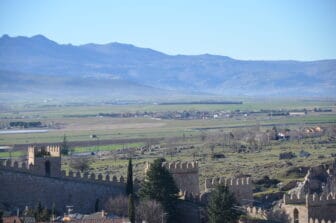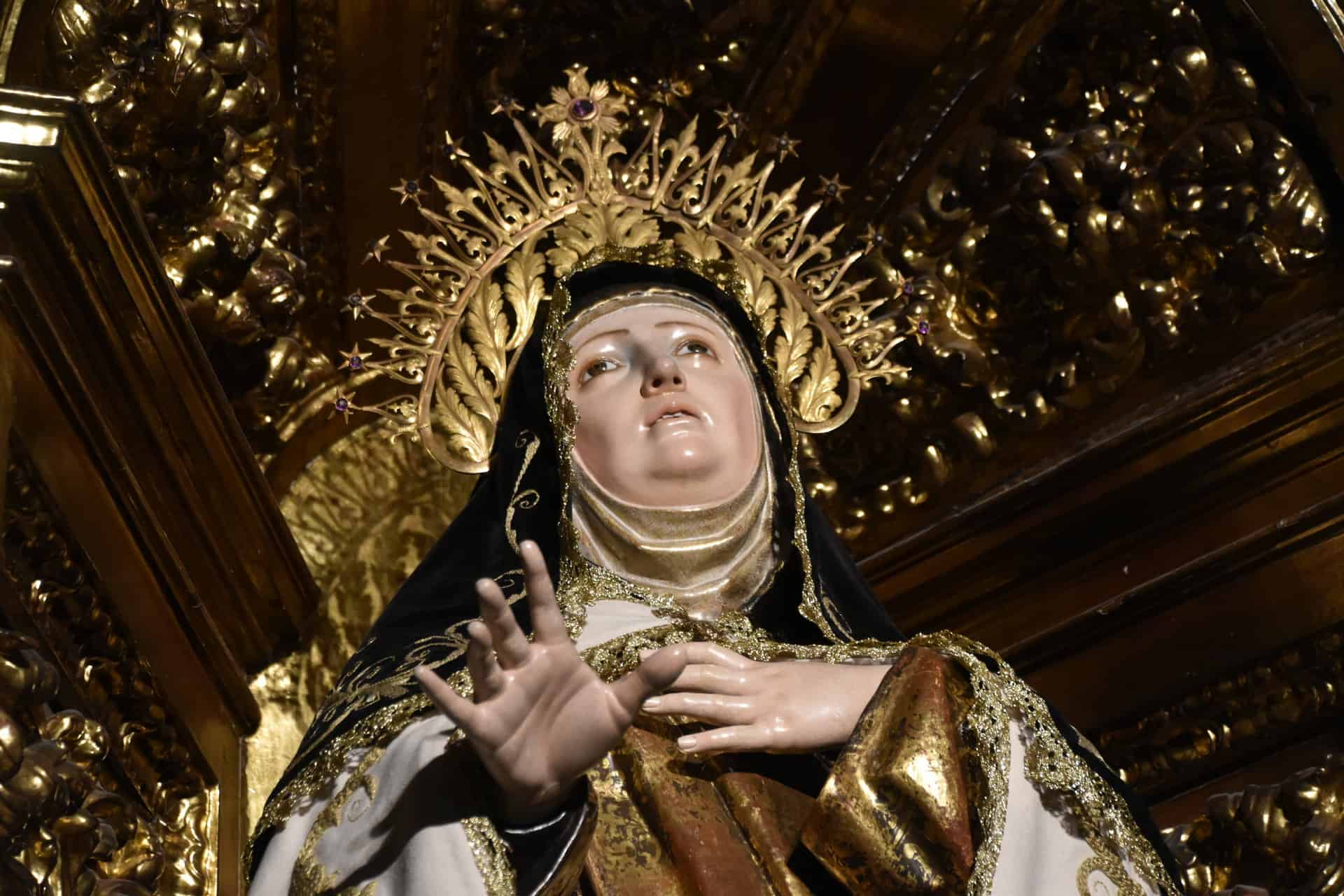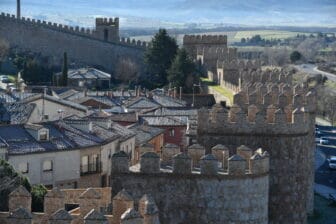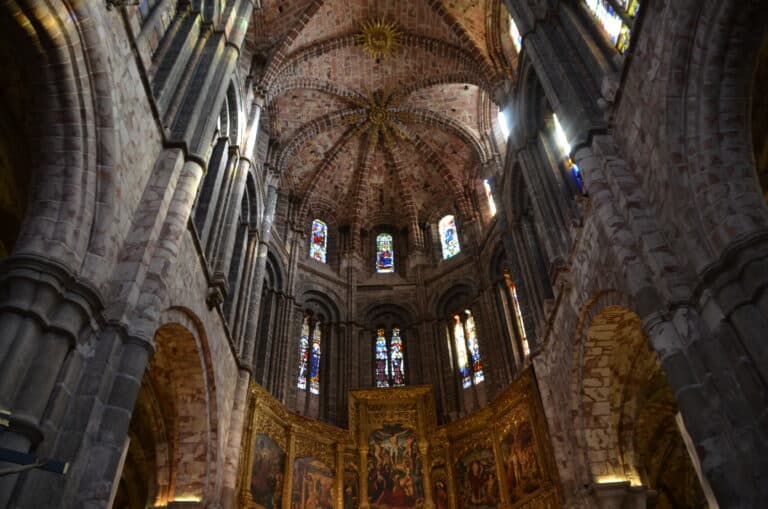
[Jan. 2023] In Ávila, which is about 100km northeast of Madrid in Spain, we stayed at a hotel near the cathedral, so we started by visiting the cathedral.
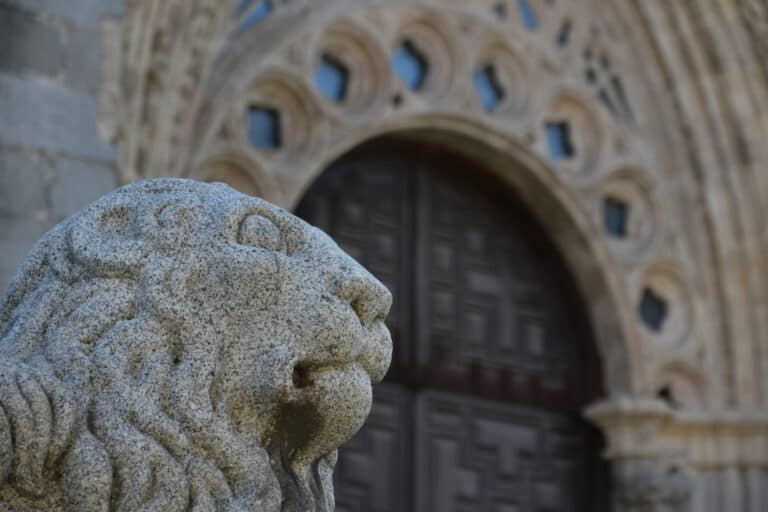
There were lion statues lined up around the cathedral, and I thought there must be some meaning, but I could not find it.
The exterior of the cathedral is grey stone and unremarkable.
We paid an entrance fee of €8 per person and went inside.
By the way, people over 65 years old can enter for €7.
As soon as you enter, you will be overwhelmed by its size, but there is not much to see.
However, when you go further inside, the stones used for the ceiling have changed from grey to unusual reddish mottled pattern.
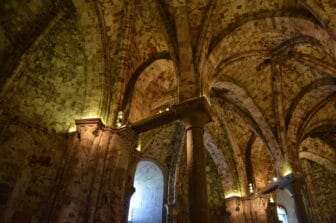
Apparently it’s sandstone.
According to a guidebook, construction of this cathedral began in the 12th century and was completed in the 14th century, making it the first Gothic cathedral in Spain.
The semi-circular tower of the apse is part of the ramparts surrounding Ávila, and while it was a cathedral, it also served as a fortress.
That’s why it’s kind of plain and not very warm atmosphere.
The main altar dates from the 16th century and contains a number of paintings depicting the life of Christ framed in gold.
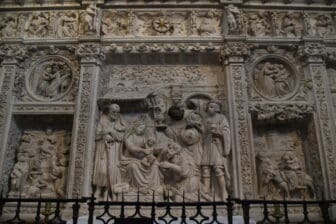
The various sculptures around there were wonderful, and I was once again impressed by the power of religion.
The side room was a museum of treasures, and there was a painting by El Greco.
Lions were also drawn on the priest’s gown, but I could not see what kind of relationship this town have with the lions.
Then we went out to the cloister and walked around, but it was a pity that it was partitioned by glass.
As I thought before, in Spain people seem to think that “bigger is better” when it comes to cathedrals, but this church was too big to feel some warmth.
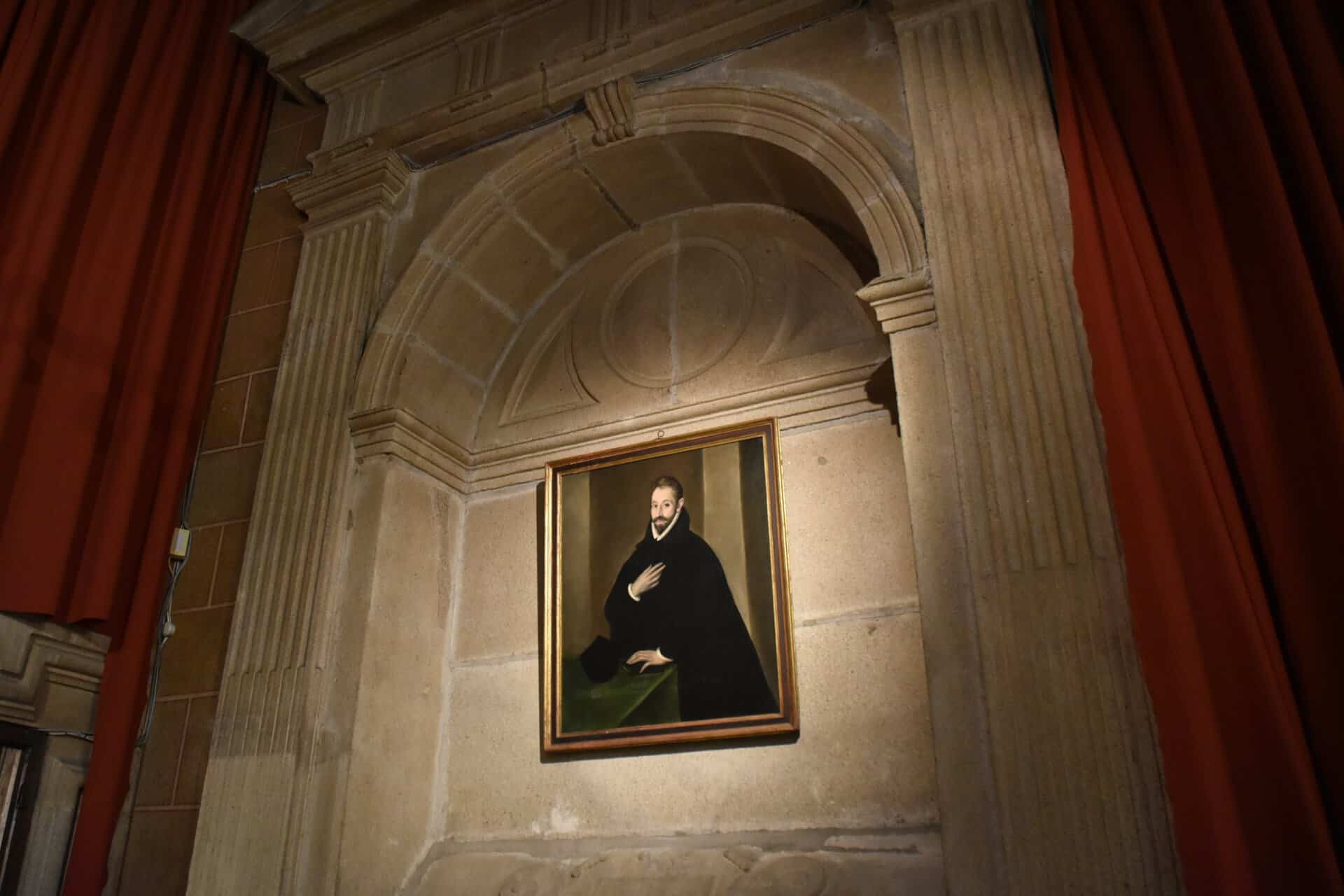
Well, the next objective was the castle wall, which is the centrepiece of this town.
Even though it says you can climb up and walk on it, we couldn’t find a point to climb up, so we wandered around inside and outside the wall.
I continued to look at the castle walls while wandering around, and found it really looked like a typical painting of a rampart.
This is worth a visit.
We exited the Vicente gate and took in the scenery.
Ávila itself is on a small hill, so you can see the surrounding plains well.
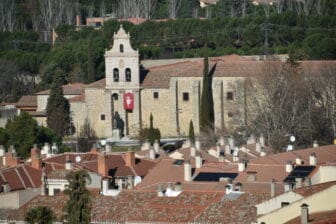
The weather was fine and the view was good, but it was so cold that we couldn’t stay still, so we hurried ahead.
We went to the Carmen Gate and asked about how to climb the ramparts at the museum there, but we couldn’t get a clear answer.
We had no other choice, so we decided to head to the restaurant we had reserved for at 2:00.
There was a 16th-century tower called the Tower of Los Guzmanes on the way, and people were going in and out.
We thought we could go up the tower and entered the building, but found out that it was a local government office and people came to see Belén, which was disappointing for us.
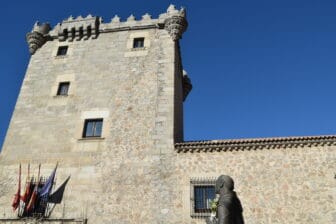
We have seen Belén several times on this trip.
I would like to ask some Spaniards what Belén really means to them.

